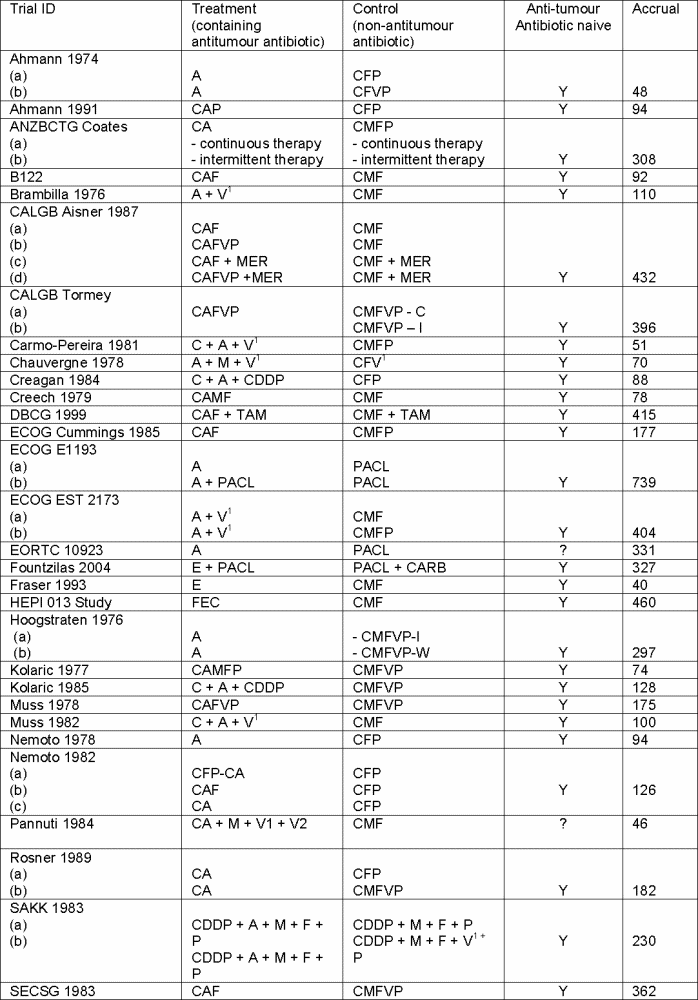Contenido relacionado
Revisiones y protocolos relacionados
Sara Balduzzi, Stefania Mantarro, Valentina Guarneri, Ludovica Tagliabue, Vanna Pistotti, Lorenzo Moja, Roberto D'Amico | 12 junio 2014
Daria J Butters, Davina Ghersi, Nicholas Wilcken, Steven J Kirk, Peter T Mallon | 10 noviembre 2010
Sam J Egger, Melina L Willson, Jenna Morgan, Harriet S Walker, Sue Carrick, Davina Ghersi, Nicholas Wilcken | 23 junio 2017
Sam J Egger, Matthew Ming Ki Chan, Qingwei Luo, Nicholas Wilcken | 21 octubre 2020
Rachel F Dear, Kevin McGeechan, Marisa C Jenkins, Alexandra Barratt, Martin HN Tattersall, Nicholas Wilcken | 18 diciembre 2013
Lorenzo Moja, Ludovica Tagliabue, Sara Balduzzi, Elena Parmelli, Vanna Pistotti, Valentina Guarneri, Roberto D'Amico | 18 abril 2012
Davina Ghersi, Melina L Willson, Matthew Ming Ki Chan, John Simes, Emma Donoghue, Nicholas Wilcken | 10 junio 2015
Siao-Nge Hoona, Peter K H Laua, Alison M White, Max K Bulsara, Patricia D Banks, Andrew D Redfern | 26 mayo 2021
Clara I Lee, Annabel Goodwin, Nicholas Wilcken | 3 enero 2017
Nicholas Wilcken, Jo Hornbuckle, Davina Ghersi | 22 abril 2003
























